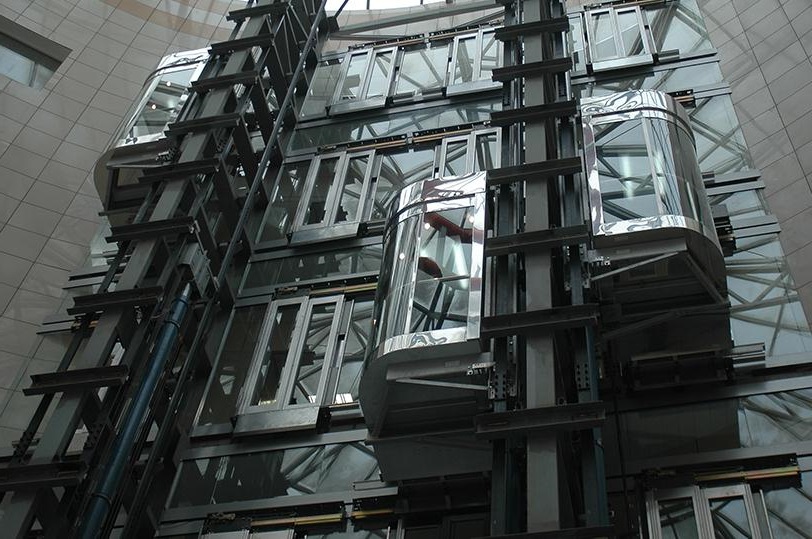Passenger, passenger-freight, and cargo lifts with hydraulic and pneumatic drive
3025
Registered participants
- Training tailored to client's needs
- Training at the client's location
- Open training at our location - if you have few employees, join us!
Passenger, passenger-freight, and cargo lifts with hydraulic and pneumatic drive
 To build and maintain passenger and freight elevators, it is necessary to have licenses issued by the Technical Inspection Authority. Therefore, as a company with many years of experience, we encourage you to use our services in the maintenance and servicing of passenger and freight elevators with hydraulic drive, among others.
Our professional maintenance experts conduct technical inspections and regular equipment revisions. We work on hydraulic passenger and freight elevators from brands such as:
To build and maintain passenger and freight elevators, it is necessary to have licenses issued by the Technical Inspection Authority. Therefore, as a company with many years of experience, we encourage you to use our services in the maintenance and servicing of passenger and freight elevators with hydraulic drive, among others.
Our professional maintenance experts conduct technical inspections and regular equipment revisions. We work on hydraulic passenger and freight elevators from brands such as:
- Schindler,
- GMV Polska,
- Global Lift,
- HusarLIFT,
- FujiHD,
- Lift Service,
- KONE,
- Green Lift,
- and others!
Characteristics of hydraulic passenger and freight elevators
Elevator Structure
The construction of each elevator consists of:- shaft,
- cabin moving within the shaft,
- a machine room located under the shaft,
- pits – below the lowest stop,
- overhead space – above the highest stop and the shaft ceiling,
- landings – stops or floors where the cabin stops.
Advantages and disadvantages of hydraulic elevators compared to electric elevators (without machine rooms)
| Feature | Hydraulic Elevator | Electric Elevator without Machine Room |
|---|---|---|
| Construction | Fewer parts. No counterweight. Lighter device (up to 60% lighter than electric elevators without machine rooms). | Many parts - wheels, bearings. Massive counterweight with guides. Long hoist ropes. Heavy device. |
| Purchase Costs | Lower by nearly 30% for 2-5 stop elevators. | Relatively higher for lower structures. |
| Installation | Fast, safe, and cost-effective installation. Efficient repairs. | Complicated installation lasting twice as long as hydraulic elevators. Complex replacement of ropes and other parts. |
| Operating Costs | Low costs for spare parts and maintenance. | High costs for parts and maintenance. |
| Shaft | Material-saving with at least one concrete wall. Main forces are at the bottom of the pit. No shaft dilation required. Small dimensions. | Massive, material-consuming drive, counterweight, and cabin. Shaft dilation is recommended. Large dimensions. |
| Speed | Often 0.63 m/s. | High, often 1 m/s. |
| Electric Power Consumption | Comparable or lower. The motor is switched off when moving down. Only lighting consumes energy during stops. | High consumption needed for counterweight movement. Frequency converter, or inverter, and lighting consume energy during stops. |
| Safety | High - no massive components. Machine room is in a separate room. | Average - increased risk during installation or maintenance. Tectonic movements and earthquakes pose a threat to the structure. |
| Noise Emission | No drive units, noise occurs only in a separate machine room. | Drive unit and control unit are located in the elevator shaft - may create annoying noise, especially in residential buildings. |
| Power Connection | Approximately two times greater than electric drive. | Usually a few kWh. |
| Ecology | Environmentally friendly. Material-saving, low device weight, few parts. Hydraulic fluid is 100% recyclable. | Massive shafts and heavy device. Many parts - winch, ropes, counterweight. Permanent magnets used in electric drives require a lot of energy in mining and production. |
Maintenance of Hydraulic Passenger and Freight Elevators
The entire maintenance process involves a set of activities aimed at preventing and minimizing wear and tear. Equipment undergoes periodic inspections and revisions to ensure safety and proper long-term operation. Servicing and maintenance of elevators include:- ongoing inspection of all equipment components,
- adjustments of components and replacement parts,
- cleaning of structural elements of elevators and parts,
- protection against corrosion.
Our maintenance experts provide services in:
- technical supervision,
- fault repair,
- repairs due to vandalism,
- elevator adjustments,
- lubrication and cleaning,
- refurbishment,
- replacement of worn-out parts.
- service – repair - spare parts,
- maintenance,
- auditing,
- consulting,
- professional training.
- Warsaw,
- Krakow,
- Katowice,
- Gdansk,
- Wroclaw,
- Poznan,
- Katowice,
- Bydgoszcz,
- Bielsko-Biala,
- Gdynia,
- Lodz.
Questions and Answers
What does elevator maintenance involve?
Elevator maintenance primarily involves preventive examination of the device to prevent breakdowns and accidents. Our maintenance experts provide services such as periodic equipment inspections, lubrication, adjustments, and potential replacements of spare parts to reduce the wear and tear of structural elements in passenger or freight elevators.
How does a hydraulic elevator differ from an electric one?
Elevators are categorized as electric or hydraulic, among others. Electric elevators, also known as traction elevators, are powered by an electric motor-driven winch. Hydraulic elevators are powered by a hydraulic pump. The choice of the appropriate device depends on various factors, so we encourage you to contact us, and we will assist you in selecting the right elevator.
